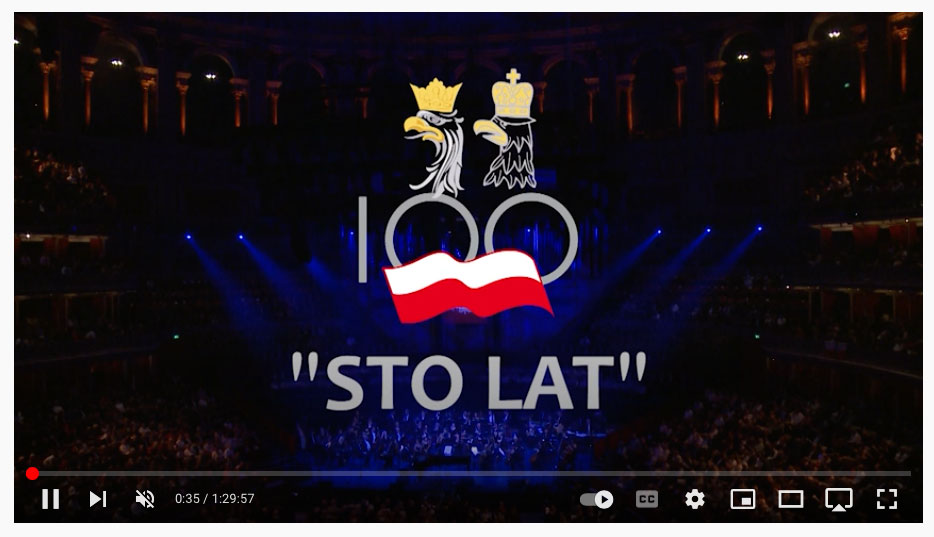
Make a donation
to PHS
Introducing
The Institute
of Polish
Military History

A message from our President, General Lord Guthrie of Craigiebank

'I am delighted to be associated with the work of the Polish Heritage Society and very honoured to serve as its President. The Society's work highlights the enormous contribution which generations of Poles have made to their adopted country. Preserving and celebrating that heritage will only further strengthen the ties between Poland and the United Kingdom.
I worked closely with the Society on the project to build a memorial to the Polish Forces at the National Memorial Arboretum and saw at first hand the energy and dedication of those involved.
I encourage you to explore this website and learn about the many other projects the Society has sponsored. Do please contact us if you would like to be involved in any way'.
General The Lord Guthrie of Craigiebank GCB LVO OBE
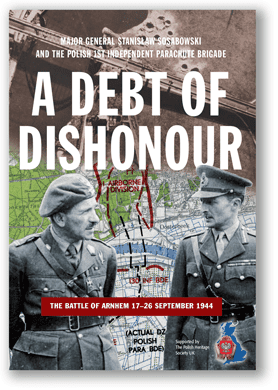
A Debt of Dishonour is a unique documentary film dedicated Major General Sosabowski and all ranks who served in the 1st Polish Independent Parachute Brigade Group and to their Comrades-in-Arms of the 1st British Airborne Division that fought in the ill-fated “Operation Market Garden” at Arnhem and Driel during September 1944.

The Polish Heritage Society
70th anniversary of the Battle of the Atlantic—May 2013
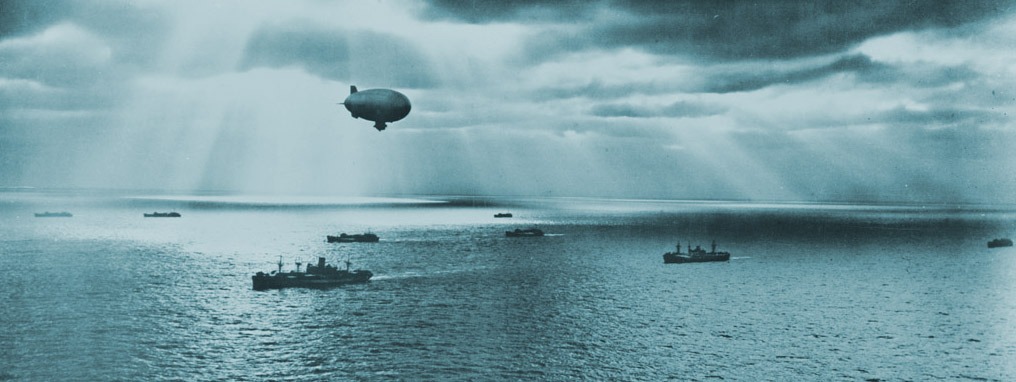 A convoy of merchant ships during the Battle of the Atlantic
A convoy of merchant ships during the Battle of the Atlantic
May 2013 marks the 70th anniversary of the Battle of the Atlantic (BOA 70) and was commemorated with a series of events centred around the cities of Liverpool, London and Derry-Londonderry.
As part of the 70th anniversary commemorations a special plaque was made in Poland and brought over to Liverpool on board the Polish frigate ORP Kościuszko as a dedication to all tof he Polish seamen served who died during the Battle of the Atlantic. The palque is situated near Canada Boulevard next to the monument for the Merchant Seamen.
{igallery id="8866" cid="39" pid="7" type="classic" children="0" showmenu="0" tags="" limit="0"}
The Battle of the Atlantic was the longest continuous military campaign of the Second World War, at its height from mid-1940 through to the end of 1943. The BOA demonstrated the enduring importance of control of the sea to provide a highway for the transport of raw materials, munitions, and men, to maintain the nation’s security and to project power across the globe. The Battle of the Atlantic was pivotal to the success of the allied side in World War 2. After the fall of Europe, the main supply route for the continued prosecution of the war was between north America and the UK across the North Atlantic. Ultimately it was the successful protection of this vital sea corridor by British and allied ships from the German surface and U-boat threat that led to success in North Africa, at D-Day and ultimately resulted in the fall of Germany.
 The Role Of The Polish Navy In WWII
The Role Of The Polish Navy In WWII
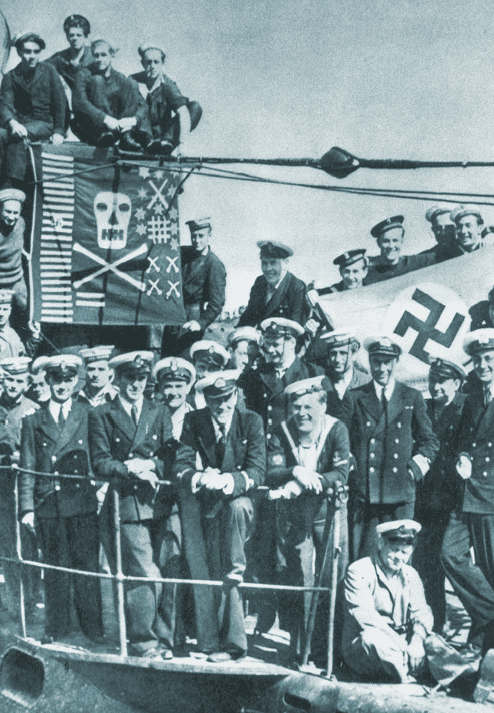 The crew of submarine ORP SokółShortly before Nazi Germany’s assault, 3 Polish destroyers – ORP Błyskawica, ORP Grom and ORP Burza and later the two submarines ORP Wilk and ORP Orzel had all managed to escape from the Baltik and arrived in British waters. These ships were to remain as the only Polish sovereign territory until the end of the war.
The crew of submarine ORP SokółShortly before Nazi Germany’s assault, 3 Polish destroyers – ORP Błyskawica, ORP Grom and ORP Burza and later the two submarines ORP Wilk and ORP Orzel had all managed to escape from the Baltik and arrived in British waters. These ships were to remain as the only Polish sovereign territory until the end of the war.
The early summer of 1940 was not a lucky time for the Polish navy who lost the legendary submarine ORP Orzeł and the destroyer ORP Grom. These losses were made good by transferring British ships to the Polish navy. HMS Garland became ORP Garland, submarine HMS Urchin became ORP Sokół and HMS Narissa became ORP Piorun. Also the Poles received ships from the French and Belgian navy. The command of several British ships was temporarily given to Polish Navy Officers, including the famous ORP Sokół which teamed up with her sister sub ORP Dzik and they earned the reputation of being the “Terrible Twins”.
By October 1940 the destroyers moved to their new base at Greenock from where they took part in the Battle of the Atlantic. Polish destroyers served as escorts for trans-Atlantic convoys, protected the English Channel, escorted convoys in the Mediterranean Sea, and also participated in the D-Day invasion of Normandy.
ORP Piorun became famous for its role in the hunt for the largest battle ship Bismark. It was ORP Piorun which first spotted Bismark in her last attempt at escape in May 1941. Despite her smaller size and smaller firepower, ORP Piorun managed to shadow and harass Bismark.
The Polish Merchant Fleet of liners and cargo vessels were integrated into the Allied Merchant Pool. Among many missions they carried Allied troops to Norway, evacuated British and Polish Troops from France, brought American and Canadian troops to Britain carried cargoes from Murmansk and Africa and participated in the invasion of Normandy. In all 54 vessels carried nearly 5million tons of war supplies.
The Polish navy served with the Allies from the first to the last days of WWII.
 FrF 273 ORP Gen. T. Kościuszko
FrF 273 ORP Gen. T. Kościuszko
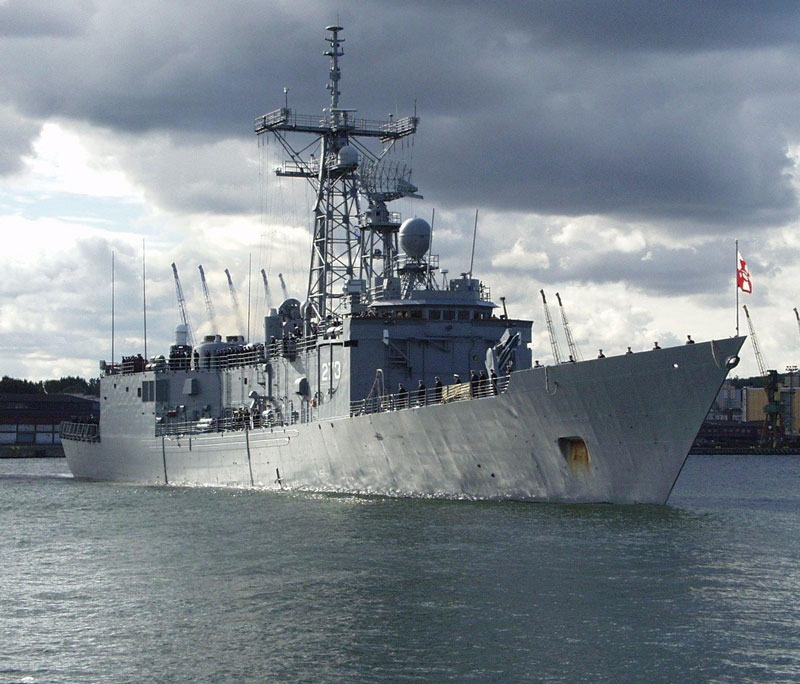 FrF 273 ORP Gen. T. KościuszkoORP Kościuszko, the former USS Wadsworth (FFG-9) was commissioned in the US Navy on 4th April 1980. In 2002 the frigate was transferred to Poland and named after General Tadeusz Kosciuszko a hero of both nations. She is one of two Oliver Hazard Perry-class Guided Missile Frigates in the Polish Navy.
FrF 273 ORP Gen. T. KościuszkoORP Kościuszko, the former USS Wadsworth (FFG-9) was commissioned in the US Navy on 4th April 1980. In 2002 the frigate was transferred to Poland and named after General Tadeusz Kosciuszko a hero of both nations. She is one of two Oliver Hazard Perry-class Guided Missile Frigates in the Polish Navy.
The OHP class is intended to fill the classic frigate role – patrolling sea lanes of communication with merchant marine protection and escort against submarine attack. She is a combatant designed for air, surface and subsurface warfare. With capabilities to replenish at sea she can conduct missions and maintain presence around the world.
FrR273 is 135.6 m long, with beam of 14m and 7.5m draft. The full load displacement is 3,638 tons. The ship’s complement is 200 crew members. The maximum speed is 29 knots with a cruising speed of 20 knots. The operational range at 20 Knots is 4,500 nautical miles. She is designed to embark two ASW SH-2G Seasprite helicopters. ORP Kosciuszko is powered by two General Electric LM2,500 gas turbine engines generating a total of 41,000 horsepower. Propulsion is provided by a single shaft with a 5m diameter variable pitch propeller.
ARMAMENT
Missailes:
SSM: Harpoon: active radar homing to 95 km at 0.9 mach, warhead 227 kg.
SAM: SM-1MR, command guidance: semi-active radar homing to 38 km at 2 mach.
Mk13Mod 4 launcher for both SSM and SAM missiles.
Guns:
76 mm OTO Melara Mk75, 80 rds/min to 16 km anti-surface; 12 km anti-aircraft.
20 mm 6-barrelled MK15 Vulcan Phalanx Close-in Weapon Syste, 3,000 rds/min combined to 1.5 km, 4X12.7 mm machine guns WKM-Bm.
Torpedoes:
Eurotorp MU-90 torpedoes, active/passive homing to 25 km at 29/50 kts.
Mk 32 – two triple 324 mm tube torpedo launchers.



